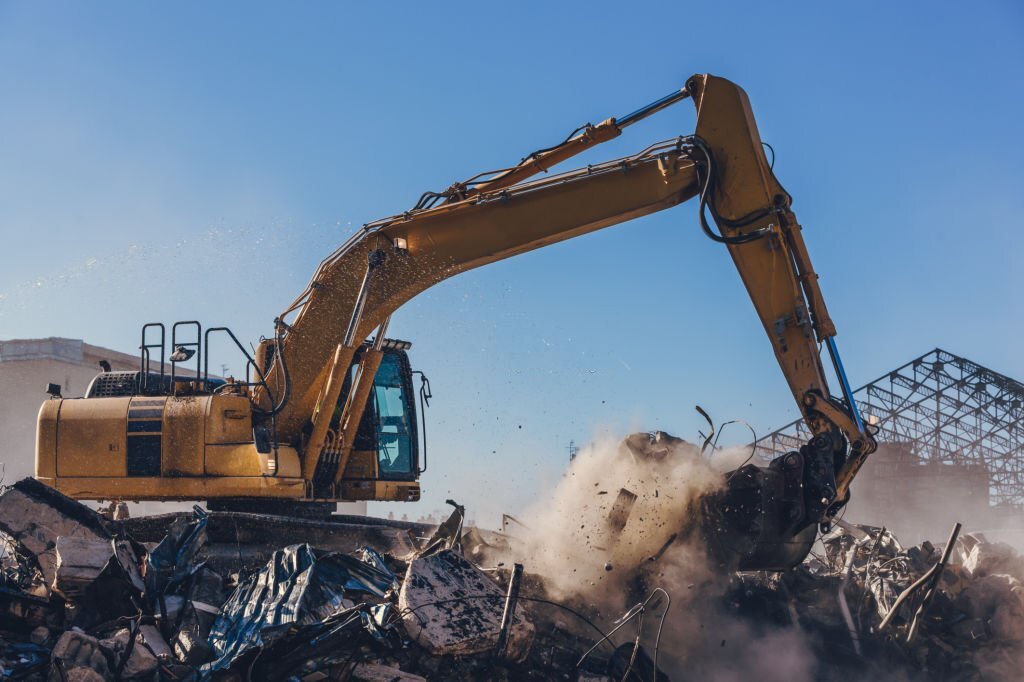
Introduction
Demolition equipment forms a crucial subset of heavy machinery, specifically designed and engineered for the safe and efficient dismantling of structures. Unlike standard heavy equipment used in construction and excavation, demolition equipment possesses unique features that make it suitable for tearing down buildings, concrete structures, and other edifices. In this comprehensive article, we will explore the distinctions that set demolition equipment apart from other types of heavy machinery, delving into the functionalities and applications of excavators, wrecking balls, concrete crushers, high-reach excavators, and more.
1. Purpose-Built for Demolition
The primary distinction between demolition equipment and other heavy machinery lies in their purpose-built design. Unlike generic construction equipment, which serves multiple roles, demolition equipment is engineered to handle specific tasks associated with tearing down structures safely and efficiently. These machines undergo modifications to enhance their capabilities, making them ideal for the unique demands of the demolition process.
2. Versatility of Excavators
Excavators stand out as one of the most versatile types of demolition equipment. While they are widely used in construction and excavation projects, their adaptability is invaluable in demolition operations. Equipped with hydraulic attachments like shears, hammers, and grapples, excavators can precisely dismantle structures, breaking down concrete and metal components efficiently.
3. Power of Wrecking Balls
Wrecking balls, though an age-old demolition tool, continue to hold their place in modern demolition projects. Suspended from a crane, these heavy spheres deliver brute force impact to structures, breaking them apart. While they lack the precision of other methods, they are ideal for demolishing large, solid structures, transforming them into manageable debris for further processing.
4. Crushing Strength of Concrete Crushers
Specifically designed for breaking down concrete structures, concrete crushers utilize powerful hydraulics to apply immense pressure on concrete surfaces. These crushers come in various configurations, including jaw and claw-like mechanisms, capable of reducing concrete into smaller, manageable pieces. Concrete crushers minimize waste and contribute to recycling efforts by preparing concrete debris for reuse.
5. Reaching New Heights with High-Reach Excavators
The introduction of high-reach excavators revolutionized demolition, especially when dealing with tall structures. These specialized machines feature extended booms and arms, allowing them to reach significant heights while maintaining stability. High-reach excavators are often employed in demolishing skyscrapers, chimneys, and other vertical structures, which are beyond the reach of conventional excavators.
6. Precision of Hydraulic Breakers
Hydraulic breakers, commonly known as hammers, are versatile demolition attachments mounted on excavators. They harness hydraulic power to deliver repeated blows, effectively breaking concrete and rocks. The precision and control offered by hydraulic breakers make them suitable for various demolition tasks, including breaking up pavements, rocks, and smaller structures.
7. Compact Efficiency of Skid-Steer Loaders
Skid-steer loaders are compact, agile machines with rigid frames and lift arms, facilitating tight turns and maneuverability. While primarily used in construction and landscaping, they find application in demolition for tasks like debris removal, material transport, and site clearing in confined spaces.
8. Power and Efficiency of Bulldozers
Bulldozers, known for their significant horsepower and robust blades, are essential in clearing large areas and pushing debris. Although typically associated with earthmoving and grading, bulldozers play a crucial role in the initial stages of demolition, clearing the site of obstacles and making way for other heavy equipment.
Conclusion
Demolition equipment differs significantly from other types of heavy machinery due to its purpose-built design, specialized functionalities, and applications. From the versatility of excavators to the raw power of wrecking balls, and the crushing strength of concrete crushers, each machine serves a specific role in the demolition process. The advent of high-reach excavators and innovative hydraulic attachments has further enhanced the efficiency and safety of demolition operations. Understanding the unique features and capabilities of demolition equipment is essential for selecting the right machinery to handle the intricate task of dismantling structures and preparing sites for new developments.

